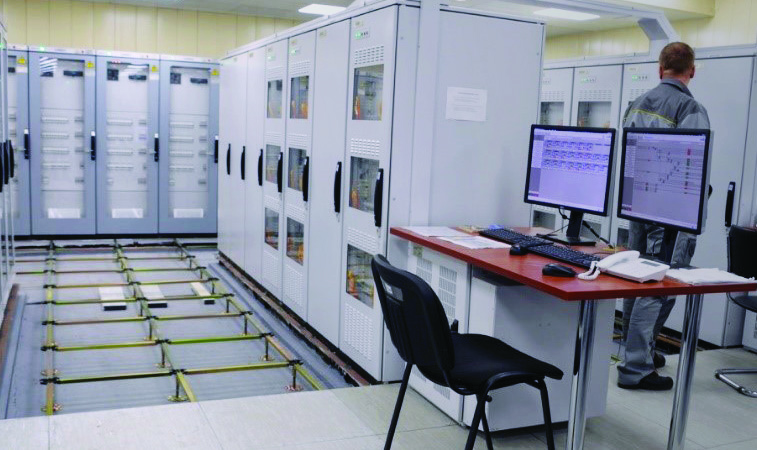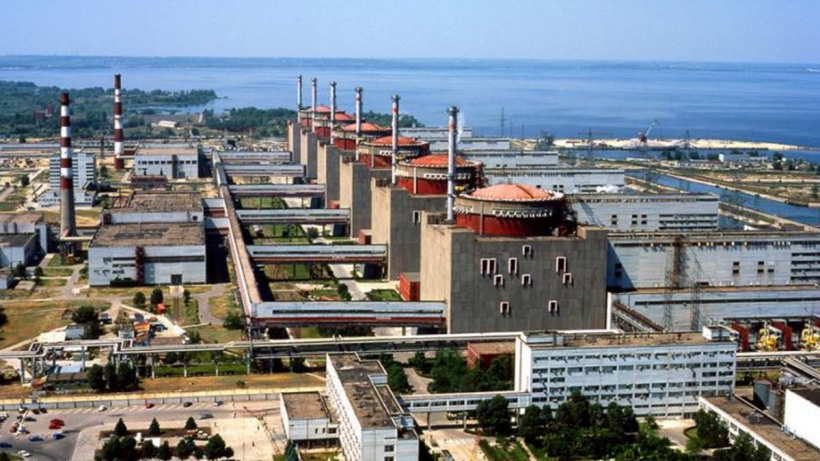NRC meetings to discuss Dresden SLR

The Nuclear Regulatory Commission is hosting several public meetings this month to discuss the Dresden nuclear power plant and its request for subsequent license renewal.


The Nuclear Regulatory Commission is hosting several public meetings this month to discuss the Dresden nuclear power plant and its request for subsequent license renewal.

Électricité de France reduced power production by 1 gigawatt on Friday at its Golfech nuclear plant, citing high water temperatures on the Garonne River.

The fight against climate change demands urgent action, and nuclear power—with its proven ability to generate vast amounts of electricity with near-zero carbon emissions—is critical to solving the world’s clean energy dilemma.
Currently, there are more than 440 operational nuclear reactors worldwide, with dozens more under construction and many countries looking to nuclear power for their clean energy future. The global nuclear fleet encompasses a range of reactor designs, from boiling water reactor (BWR) and pressure water reactor (PWR) workhorses to innovative small modular reactors (SMRs).
The key to unlocking this carbon-free powerhouse? Modernizing existing nuclear plants with digital I&C systems.

The Nuclear Regulatory Commission has renewed the operating licenses of Comanche Peak Units 1 and 2 for an additional 20 years.
Unit 1’s operating license now expires on February 8, 2050, and Unit 2’s on February 2, 2053.

The Duane Arnold nuclear power plant in Iowa could see new life, according to NextEra Energy chief executive officer John Ketchum.
“There would be opportunities and a lot of demand from the market if we were able to do something with Duane Arnold,” Ketchum said on Wednesday this week during the company’s second-quarter earnings call.

A new report based on what its authors call “the definitive American public opinion surveys on climate change and the environment” has found a statistically significant increase in the percentage of survey respondents who think nuclear power is a good way to generate electricity, relative to a survey that asked the same question in 2013. That’s despite evidence that “Americans’ views on climate change have remained remarkably steady.” The new report, Climate Insights 2024: American Understanding of Climate Change, is the product of a 27-year polling partnership led by the Political Psychology Research Group at Stanford University and Resources for the Future (RFF), and it was released July 15.

One of the new Vogtle units in Georgia was shut down unexpectedly on Monday last week for a valve issue that has since been investigated and repaired. According to multiple local news outlets, Georgia Power reported on July 17 that Unit 3 was back in service.
Southern Company spokesperson Jacob Hawkins confirmed that Vogtle-3 went off line at 9:25 p.m. local time on July 8 “due to lowering water levels in the steam generators caused by a valve issue on one of the three main feedwater pumps.”

Dozens gathered last week at a public hearing hosted by the Nuclear Regulatory Commission to get feedback on the proposal to restart the Palisades nuclear power plant in Michigan.
The NRC is beginning its environmental review of plans to repower Palisades after it was shut down in May 2022 and was headed for permanent decommissioning. If the restart is successful, this would be the first return to service of a shuttered U.S. nuclear plant.

The combined energy generation in the United States from solar and wind during the first half of the year was more than that of nuclear plants for the first time, according to data from energy think tank Ember.
Electricity generation from utility-scale solar and wind assets during the first half of 2024 was a record 401.4 terawatt-hours, compared with 390.5 TWh from nuclear reactors

While commissioning began earlier this year at Turkey’s first nuclear plant, new reports say the project is delayed by sanctions against Russia due to its military invasion of Ukraine.

Constellation Energy is in talks with the governor’s office and state legislators about funding to restart a unit at Three Mile Island nuclear plant, Reuters has reported. The ongoing talks have been described as “beyond preliminary” by two sources.
Every year, the National Renewable Energy Laboratory (NREL) puts out a set of technology-specific cost and performance parameters for electricity generation. Now in its 10th year, the Electricity Annual Technology Baseline (ATB) has nearly 100,000 users from 144 countries, according to NREL. Utility planners and grid operators who look to the ATB to assess their investment options in a changing market require complete and accurate information and will be glad to know that the 2024 Electricity ATB, released June 24, includes—for the first time—a range of data on nuclear energy.

In budget discussions conducted last week, the California legislature rejected a $400 million budget item to help keep the state’s sole remaining nuclear plant operational.
Diablo Canyon—owned by Pacific Gas & Electric—has been the subject of much debate in California. To meet grid demands during a record hot summer in 2022, Gov. Gavin Newsom had cut a deal to give $1.4 billion to support continued operations at the 2,200-MWe nuclear facility.

A ceremony in Wyoming yesterday marked the official start of construction of TerraPower’s planned Natrium reactor demonstration project.
While currently awaiting final review from the U.S. Nuclear Regulatory Commission, TerraPower is moving forward with nonnuclear construction work at a retired coal plant near Kemmerer, Wyo. The groundbreaking brought together TerraPower leaders, government officials, Natrium project partners, industry advocates, and community supporters.

John Wagner
As advocates for the environment, national security, and U.S. prosperity, and as believers that the substantial global expansion of nuclear energy is essential to these interests, let’s take a moment to recognize how far we have come.
In recent years, much has changed. Public opinion polls show increasingly broad support for nuclear energy, which has bipartisan and bicameral support in Congress. The U.S. is on the cusp of achievements that could usher in a new era of nuclear energy and reestablish U.S. global leadership. The prevailing question is no longer whether we need nuclear energy, but rather, how much more nuclear power do we need, how can we enable first movers, and how quickly can we deploy new reactors.

As he joined with other state officials and community stakeholders at a celebration last week marking the completion of Vogtle Units 3 and 4, Georgia Gov. Brian Kemp said there’s potential for a fifth nuclear reactor at the site.

An official from Russia’s state-owned nuclear power company Rosatom said this week that there are no current plans to reopen the Zaporizhzhia nuclear power plant in Ukraine.
The United Kingdom has announced a northern Wales site as its preferred location for a third mega-nuclear power station as the nation aims to support long-term energy security.
Following its plans to build nuclear facilities at Hinkley in Somerset and Sizewell in Suffolk, both in England, U.K. officials hope to revive the nuclear history of Wylfa, in Wales, and bring thousands of jobs and major investment to the area. The government is kickstarting talks with global energy firms in hopes of building a nuclear plant in Wylfa that could provide enough energy to power 6 million homes for 60 years.

On the company’s earnings call this month, Constellation CEO Joe Dominguez was asked if there is a possibility of restarting the shuttered Three Mile Island plant—as is being proposed for the Palisades nuclear plant in Michigan.
“We’re not unaware that opportunity exists for us,” Dominguez said. “We’re obviously seen what’s happened with Palisades and I think that was brilliant. Brilliant for the nation. … We are doing a good bit of thinking about a number of different opportunities, and that would probably certainly be one of those that we would think about.”
Members of the U.S. Senate Energy and Natural Resources Committee on Tuesday included nuclear energy as part of their discussions of the increasing demand for electricity anticipated in the coming decade, spurred in large part by the rise of artificial intelligence, data centers, and public consumption.